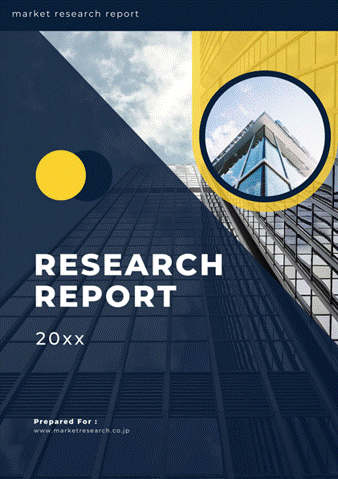 | • レポートコード:MRC2103C145 • 出版社/出版日:Mordor Intelligence / 2021年2月27日 • レポート形態:英文、PDF、110ページ • 納品方法:Eメール(受注後2-3営業日) • 産業分類:医療 |
| Single User | ¥629,000 (USD4,250) | ▷ お問い合わせ |
| Team User | ¥703,000 (USD4,750) | ▷ お問い合わせ |
| Corporate License | ¥1,110,000 (USD7,500) | ▷ お問い合わせ |
• お支払方法:銀行振込(納品後、ご請求書送付)
レポート概要
| 本調査資料では、世界の血漿プロテアーゼC1阻害剤市場について調査し、イントロダクション、調査手法、エグゼクティブサマリー、市場動向、医薬品種類別(C1阻害剤、カリクレイン阻害剤、選択的ブラジキニンB2受容体拮抗薬)分析、剤形別(凍結乾燥、注射)分析、地域別分析、競争状況、市場機会/将来の見通しなどを掲載しています。 ・イントロダクション ・調査手法 ・エグゼクティブサマリー ・市場動向 ・世界の血漿プロテアーゼC1阻害剤市場規模:医薬品種類別(C1阻害剤、カリクレイン阻害剤、選択的ブラジキニンB2受容体拮抗薬) ・世界の血漿プロテアーゼC1阻害剤市場規模:剤形別(凍結乾燥、注射) ・世界の血漿プロテアーゼC1阻害剤市場規模:地域別 ・競争状況 ・市場機会/将来の見通し |
The Plasma Protease C1-inhibitor Treatment Market is expected to experience a significant growth over the forecast period due to the growing incidence of hereditary angioedema (HAE). Hereditary angioedema is a potentially life-threatening genetic condition with incidence between 1 in 10,000 and 1 in 50,000 people according to HAE International (HAEi), the global umbrella organization for the world’s HAE patient groups.
Additionally, increasing R&D investments, discovery of inhibitor drugs, increasing product approvals promising pipeline drugs and novel therapies for the treatment of hereditary angioedema are the few other factors driving the market globally.
Key Market Trends
Selective Bradykinin B2 Receptor Antagonist Segment is Expected to Witness Healthy CAGR Over the Forecast Period
A bradykinin B2 receptor antagonist used to treat acute episodes of swelling and inflammation associated with hereditary angioedema (HAE). In 2011, Icatibant (Firazyr), a selective bradykinin B2 receptor antagonist, was approved by the US Food and Drug Administration for treatment of acute attacks HAE in adults. Approval was based on 3 double-blind, randomized, controlled clinical trials known as For Angioedema Subcutaneous Treatment (FAST) 1, 2, and 3.
In September 2019, Pharvaris also received a USD 66 Million Series B Financing to Advance the Clinical Development of novel oral B2-receptor antagonists for the treatment of hereditary angioedema (HAE) and other B2-receptor-mediated indications.
North America is Found Dominating the Global Plasma Protease C1-inhibitor Market
North America dominates the global Plasma Protease C1-inhibitor market owing to the rising Hereditary Angioedema (HAE) and increasing R&D investments. The other factors also includes presence of well-established healthcare infrastructure, an increasing number of product approvals, and major market players providing effective treatment options to the patients suffering from Hereditary Angioedema in North America.
According to DiscoverHAE, it is estimated that 6,000 people in the United States live with HAE currently. In June 2017, CSL Behring received U.S. Food and Drug Administration (FDA) approval for its HAEGARDA (C1 Esterase Inhibitor Subcutaneous [Human]), the first and only subcutaneous therapy indicated for routine prophylaxis to prevent hereditary angioedema (HAE) attacks in adolescent and adult patients. Hence all these factors are expected to drive the overall market in the United States.
Competitive Landscape
In Plasma Protease C1-inhibitor market, major players are focusing on various market strategies such as high research and development activities, partnerships, collaborations, acquisitions and mergers etc. Major players in the Plasma Protease C1-inhibitor market are CSL Behring LLC., Takeda Pharmaceutical Company Limited, Pharming Technologies B.V., KalVista Pharmaceuticals, Inc amongst others.
Reasons to Purchase this report:
– The market estimate (ME) sheet in Excel format
– 3 months of analyst support
1 INTRODUCTION
1.1 Study Assumptions and Market Definition
1.2 Scope of the Study
2 RESEARCH METHODOLOGY
3 EXECUTIVE SUMMARY
4 MARKET DYNAMICS
4.1 Market Overview
4.2 Market Drivers
4.2.1 Increasing Prevalence of Hereditary Angioedema (HAE)
4.2.2 Increasing Investments in the Research & Development Activities
4.3 Market Restraints
4.3.1 High Price of Esoteric Testing Procedures Restricting Market Entry
4.4 Porter’s Five Force Analysis
4.4.1 Threat of New Entrants
4.4.2 Bargaining Power of Buyers/Consumers
4.4.3 Bargaining Power of Suppliers
4.4.4 Threat of Substitute Products
4.4.5 Intensity of Competitive Rivalry
5 MARKET SEGMENTATION
5.1 By Drug Type
5.1.1 C1-inhibitors
5.1.2 Kallikrein Inhibitor
5.1.3 Selective Bradykinin B2 Receptor Antagonist
5.2 By Dosage Form
5.2.1 Lyphophlised
5.2.2 Injectables
5.3 Geography
5.3.1 North America
5.3.1.1 United States
5.3.1.2 Canada
5.3.1.3 Mexico
5.3.2 Europe
5.3.2.1 Germany
5.3.2.2 United Kingdom
5.3.2.3 France
5.3.2.4 Italy
5.3.2.5 Spain
5.3.2.6 Rest of Europe
5.3.3 Asia Pacific
5.3.3.1 China
5.3.3.2 Japan
5.3.3.3 India
5.3.3.4 Australia
5.3.3.5 South Korea
5.3.3.6 Rest of Asia-Pacific
5.3.4 Middle East and Africa
5.3.4.1 GCC
5.3.4.2 South Africa
5.3.4.3 Rest of Middle East and Africa
5.3.5 South America
5.3.5.1 Brazil
5.3.5.2 Argentina
5.3.5.3 Rest of South America
6 COMPANY PROFILES AND COMPETITIVE LANDSCAPE
6.1 CSL Limited (CSL Behring LLC)
6.2 Takeda Pharmaceutical Company Limited (Shire Pharmaceutical Holdings)
6.3 Ionis Pharmaceuticals, Inc.
6.4 Pharming Technologies B.V.
6.5 Centogene AG
6.6 BioCryst Pharmaceuticals
6.7 KalVista Pharmaceuticals, Inc.
6.8 Fresenius Kabi
7 MARKET OPPORTUNITIES AND FUTURE TRENDS